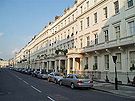Realistic City workers sell homes
The market in areas of London where City boys are cutting their losses and selling up for now is beginning to move as some vendors are determined to sell by Christmas


Some vendors are finding it difficult to accept that they need to reduce prices on their homes in the current market. But now, rational City workers are dropping prices on their London houses in order to sell them fast.
According to a study by estate agents Cluttons, City workers are pricing their homes to sell in areas such as Shad Thames, Wapping, Battersea and Clapham, where sales activity has gone up over the last fortnight.
* Luxury property for sale in London
City workers, have a trading mentality and think they should cut their losses and start again, are prepared ‘to take a hit’ to reduce their debt levels, says Richard Cotton, divisional head of residential agency at Cluttons.
‘Many non-City workers have their heads in the sand still,’ he says, ‘while City guys know they must sell and will listen to our advice.’
The City workers deciding to sell at a lower price have been made redundant recently or have interest only mortgages that have risen from four to seven percent.
‘They are selling, renting for a while and regrouping,’ Mr Cotton explains. ‘It is all about clearing the decks. Quite a few of these City workers recognise there will be a lot of money to be made in five years time and they need to be in a position to buy.’
Sign up for the Country Life Newsletter
Exquisite houses, the beauty of Nature, and how to get the most from your life, straight to your inbox.
He says this is similar to an earlier slowdown in the early Nineties – ‘if you bought in 1992, you ended up doing very well.’
Tom Tangney from Knight Frank in Kensington says he is beginning to witness pragmatism from people on his patch too.
‘They just want to get on with their lives. They come in to see us and want us to tell them the truth without any flannel.’
Mr Tangney says it is akin to going to the dentist. ‘You see them wincing and closing their eyes, hoping it won’t hurt. And then you give them the news about the real value of their house and how to sell it.’
It is getting easier to hold these conversations with vendors, points out Mr Tangney, ‘some of whom are shaving prices to sell before Christmas, while others are preparing to sell in mid-January.’
One problem is that some estate agents have built in a large margin, knowing buyers expect a reduction.
‘They believe the buyer then thinks he is getting a bargain, but I think most buyers are savvy enough to see through this.’
Canny sellers want to know the ‘feet on the ground’ value attached to their house now and what they have to do to achieve this selling price.
Mr Tangney advises them to put a house worth £1 million on the market at £1.1 million and accept a good offer as close to the price as possible.
‘We see green shoots sprouting in Wandsworth and Wimbledon, in particular, where our agents have been tough with the clients and they are getting results,’ he adds.
Country Life is unlike any other magazine: the only glossy weekly on the newsstand and the only magazine that has been guest-edited by HRH The King not once, but twice. It is a celebration of modern rural life and all its diverse joys and pleasures — that was first published in Queen Victoria's Diamond Jubilee year. Our eclectic mixture of witty and informative content — from the most up-to-date property news and commentary and a coveted glimpse inside some of the UK's best houses and gardens, to gardening, the arts and interior design, written by experts in their field — still cannot be found in print or online, anywhere else.
-
 A well-connected rural playground with 23 acres on the edge of the South Downs National Park
A well-connected rural playground with 23 acres on the edge of the South Downs National ParkOld House Farm is an impressive family home with a wealth of amenities that would inspire any rural passion.
By Arabella Youens Published
-
 The UK gets its first ‘European stork village’ — and it's in West Sussex
The UK gets its first ‘European stork village’ — and it's in West SussexAlthough the mortality rate among white storks can be up to 90%, the future looks rosy for breeding pairs in southern England.
By Rosie Paterson Published
